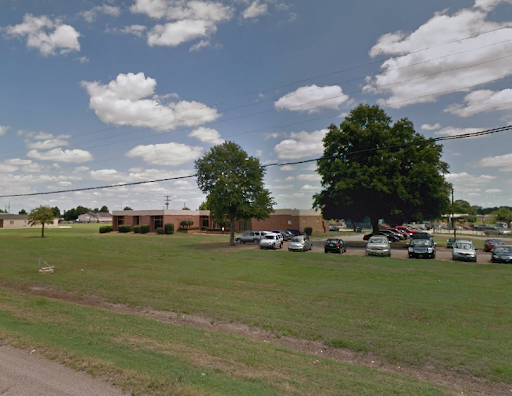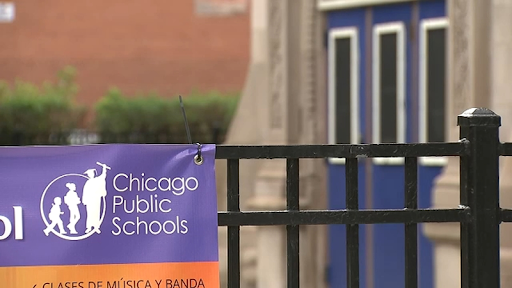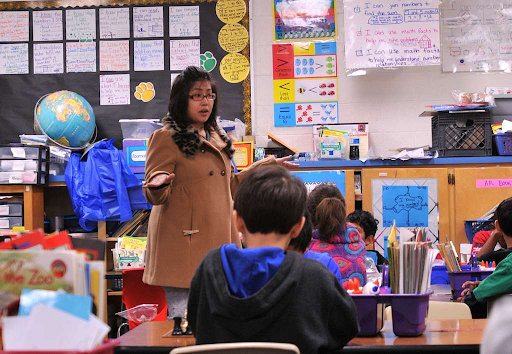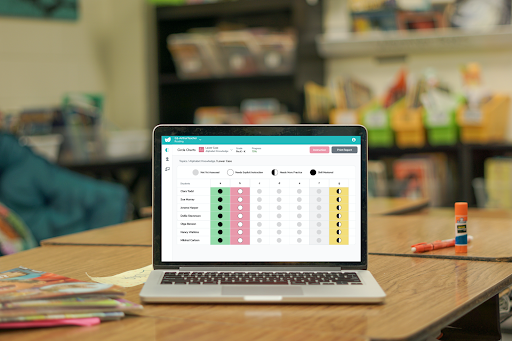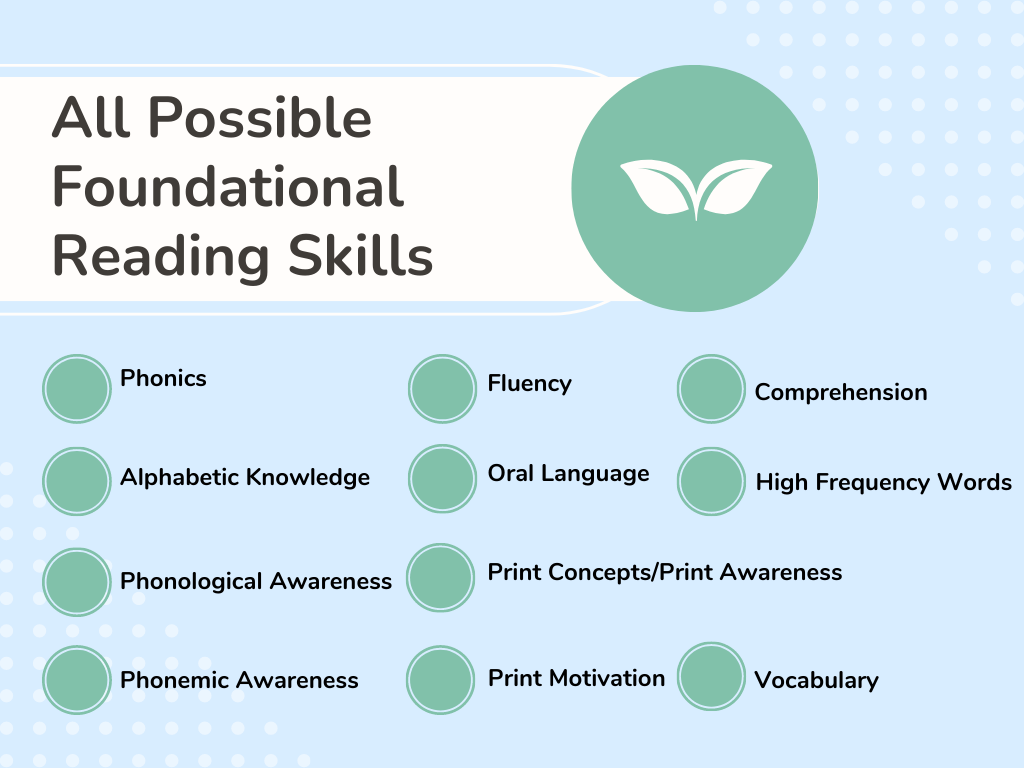Starting Strong: How Educational Leaders Can Transform Reading in their School
It’s the beginning of another school year.
It’s a time where many schools are looking at optimizing their current reading programs, tools, approaches and resources in order to improve early literacy outcomes.
For others, it’s a time to evaluate existing early literacy resources already in place.
In both cases, the new school year presents itself as an opportunity to do things right.
Starting strong is essential to early reading success. Not only for young learners, but for teachers and administrators as well, where they review what has worked and what can be improved, to create an action plan that will serve them well for the upcoming school year.
This article will help school leaders to optimize early reading resources, engage educators, and implement impactful changes to elevate literacy outcomes.
Knowledge, Application and System
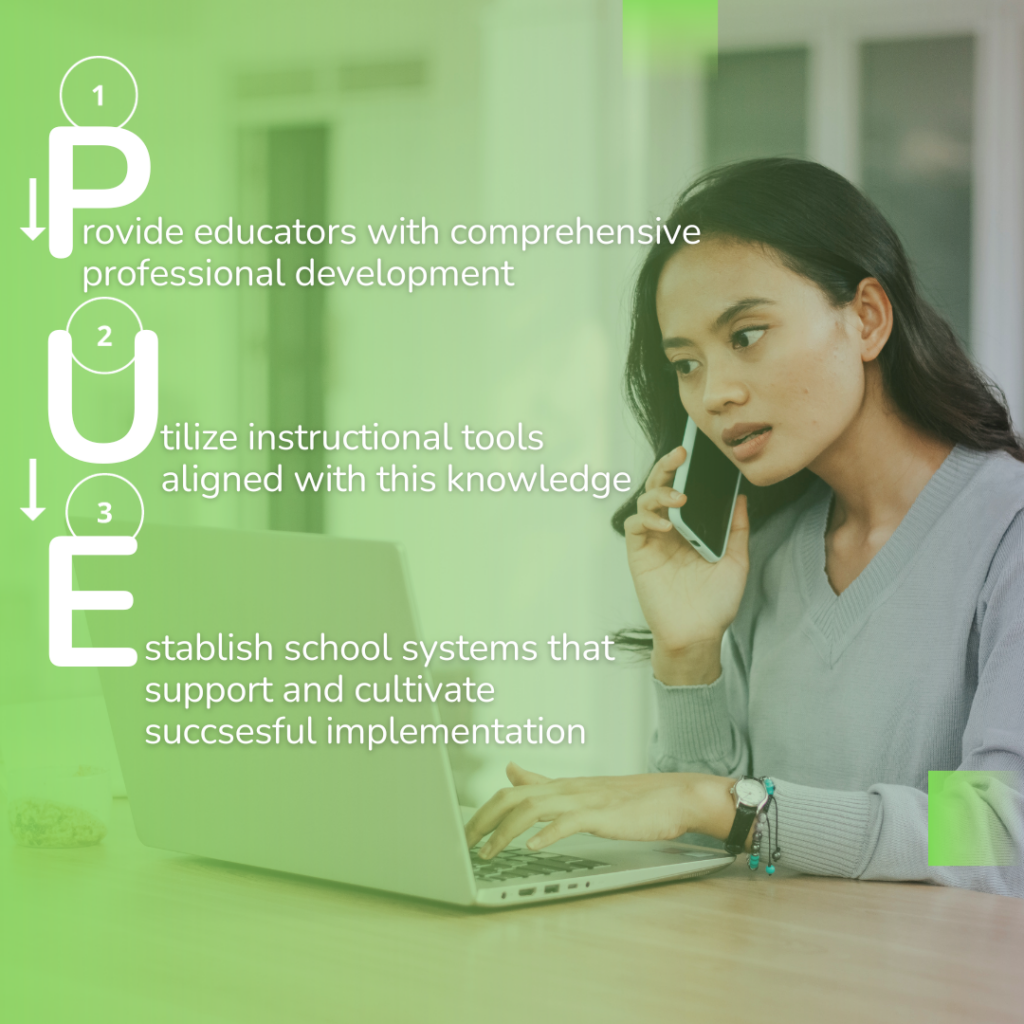
Ensure All Three Are in Your School Improvement Plans
A successful reading program develops reading proficiency in every student and relies on proven practices.
There are three essential elements that are vital for designing, executing, and maintaining effective reading instruction.
- Providing educators with comprehensive professional development.
- Utilizing instructional tools aligned with this knowledge.
- Establishing school systems that support and cultivate successful implementation.
So it’s important to ensure that all three elements are a part of your schoolwide strategy to improve reading outcomes.
Ensuring the presence of all three ensures the sustainability of a well-functioning early reading program.
Educators must feel supported with adequate professional development at a time when there is a strong resurgence of evidence-based early literacy.
Furthermore, there must be an outlet for this knowledge to translate into classroom practices. Educators need to be equipped with the right tools.
Finally, the school culture must be ready to embrace and support the cause to improve early literacy.
When all three components are present in the school’s early reading program, this effectively supports actual practices, beginning with teaching strategies.
Tier 1 Instructional Strategy
Build a Strong Core
Before all else, is your tier 1 instruction sufficiently comprehensive?
If not, it could be a stumbling block to early reading success for students.
Researchers have found out that choosing and implementing a research-based core reading program is the key first step in a model that is designed to prevent reading supports for most students.
Studies have explored different methods of teaching reading on Title 1 student achievement. The findings suggest that programs employing explicit instruction on foundational skill sets result in higher achievement, particularly among students at risk of reading difficulties.
Audit of Assessment Practices
Standardized, Diagnostic and Ongoing— Need for All Three Types
Assessment is a vital component of any effective reading program.
It should align with the reading curriculum, allowing for the tracking of student progress and helping teachers gauge the pace of instruction.
In such programs, assessment informs instruction for both large groups and individuals, with various assessment tools serving distinct purposes.
Statewide achievement tests, for instance, provide insights into systemwide instructional effectiveness.
Diagnostic tests aid classroom teachers in planning instruction and communicating student needs to parents.
Ongoing assessments guide decisions on groupings, instructional speed, and the need for individual support.
It’s important to audit your existing assessment practices to ensure that all three of these types of assessments are present.
Regarding Content of Assessment
In the early grades, assessing foundational skills and strategies crucial for long-term outcomes, is of utmost importance.
Consequently, early-grade reading assessments should be frequent and skill-specific.
Developing Differentiated Instruction Capabilities
Strengthen Differentiated Instruction to Realize Full Value of Ongoing Assessments
Studies have revealed that in highly effective schools, more time is devoted to small-group instruction, which is a powerful approach of differentiating instruction to individual and group needs.
Frequent and ongoing assessments, coupled with early intervention, facilitate students moving reading levels, a characteristic of the most effective schools.
It allows for adaptable pacing and complexity adjustments according to the level of the students.
But there is no question of intervening without the ability to group students, or isolate individual students.
Thus, ensuring ongoing assessments that measure the foundational reading skills is just one half of the equation.
In order to truly enable early reading success, teachers need to be able to differentiate instruction for their diverse classrooms, both in terms of background and ability.
The Runway for Early Reading Success
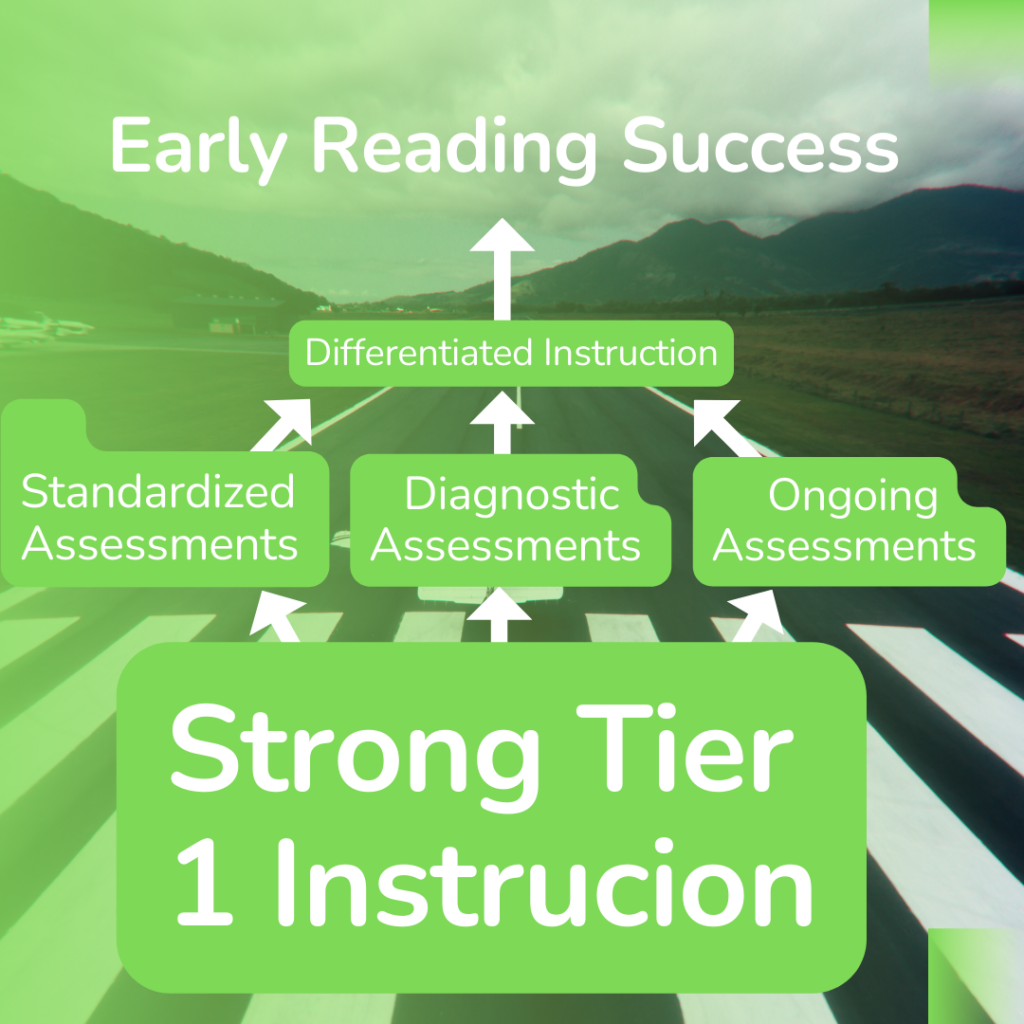
Timing is really important. Some of the newer evidence-based literacy legislations that have been enacted will not fully come into effect until the 2024-2025 school year.
Any forecasted academic improvements will take even more time to become visible. Amy Rhyne, Director of Early Literacy in North Carolina State Department of Public Instruction, says “Anything in education, it takes three to five years”
Transformation, as observed in North Carolina, is unfolding gradually, marked by disparities from one school to another, and sometimes even from teacher to teacher.
It hinges on a delicate blend of encouragement, incentives, and teacher support. It is a challenging equilibrium given that many school systems and educators have long held the autonomy to determine what and how they teach.
A good way to plan for these legislative changes is to ask what is the change, how much is the change, and what can be done about it beginning today?
The runway has to be adequately planned, so it’s a smooth ride before take off.
If a school’s reading program has already thought about professional development, its application into practice, the systems that will support it, and also how it plans to address tier 1 instruction, formative assessments, and differentiated instruction, it can then consider supporting teachers to be more deliberate about their teaching strategies.
School Leaders Supporting Teachers
Teachers, even those with the most advanced knowledge and skills,cannot and should not be asked to carry the entire burden of improving reading outcomes for all learners.
There is a need for system-level change. Distinguished early literacy researchers in the The American Federation of Teachers have listed 6 steps that teachers can implement in their classrooms now, which school leaders should start supporting immediately.
1. Use academic learning time deliberately and purposefully to ensure students receive the maximum amount of evidence-based instruction.
Academic engagement, often measured as “time on task”, serves as a strong predictor of academic success. Reflect upon the allocation of your teaching hours, ensuring a substantial focus on explicit instruction and high-priority skills linked to improved reading outcomes. Observations indicate that classrooms often underutilize instructional time for these critical skills.
2. Consider the value of the one-minute lesson.
Numerous students grappling with substantial reading challenges find immense value in concise one-minute lessons. These sessions offer a quick review of challenging tasks, the chance to practice word reading with immediate feedback, or the opportunity to showcase their understanding with feedback.
3. Offer customized instruction that reflects students’ learning needs.
While some of your students may grasp reading effortlessly, others with reading difficulties, disabilities, or dyslexia demand personalized instruction tailored to their unique learning requirements. Start by scrutinizing their screening and progress monitoring data. Identify the key areas where they need supplementary instruction and practice. Then, strategize on integrating this work into daily individual mini-lessons or with small groups of students who share similar needs.
4. Give struggling readers instruction in small groups, in pairs, or one on one.
Numerous students facing reading challenges thrive when exposed to specialized instruction, which can be effectively delivered in small-group settings, paired sessions, or one-on-one interactions. These formats offer the flexibility to customize instruction to their specific needs, delivering the right balance of practice and precise, targeted feedback
5. Create many opportunities to read a range of text types and a range of text levels.
Students encountering reading challenges find value in broadening their reading experiences to encompass diverse text genres, spanning digital, informational, and narrative texts. This diversity in text types shouldn’t be limited to older students; it can be integrated into the listening comprehension and text reading of younger learners, even those who are just beginning to read. With sufficient background knowledge, motivation from intriguing topics, and additional instructional support, students can engage with and comprehend more advanced texts.
6. Provide explicit instruction that incorporates clear feedback.
Before teaching, clear expectations should be established for student actions and responses. It should be clearly communicated what they should know. Students must showcase their understanding of the taught concepts. Specific feedback must be provided that encourages the desired behavior while addressing any errors.
Getting Teachers to Adopt The Above Techniques For The New School Year

Despite the involvement of three major agents of change—legislatures, researchers, and activist parents, persuading teachers to adopt new techniques remains a challenging endeavor.
Kymyona Burk, instrumental in driving Mississippi’s early literacy transformations and now a policy fellow at the think tank ExcelinEd, says “The hardest part was convincing others who had done things a certain way for such a long time that we needed to make a shift. We had to make a shift in our instructional practices; we had to make a shift in the curricula that we were purchasing; and also we had to just really come to terms with the fact that there were so many of our teachers who had come through our education-preparation programs who still were not equipped to teach children who struggle how to read.”
Mississippi initiated a comprehensive teacher retraining program, which involved a rigorous module that delves into the fundamentals of speech sounds, known as phonemic awareness. Several states have since adopted similar approaches.
However, retraining educators with packed schedules is a time-consuming process and may not necessarily result in substantial changes to their classroom practices. As Timothy Shanahan, former director of reading for Chicago schools and an early-literacy expert, points out, “There are tens of thousands of schools in the United States, and there’s limited oversight into their day-to-day operations.”
Need for Strong Leadership

School leaders have the great task of working with teachers to gradually implement instructional, assessment, and differentiation practices that align with the extensive body of research aimed at enhancing reading outcomes.
Effective leadership at the local policy and school levels holds substantial influence.States and local districts wield significant financial power when it comes to educational decisions.
Numerous organizations who advocate for struggling students, emphasize the pivotal role of school-based leadership in successfully implementing top-tier reading instruction and professional development.
Research highlights how capable leadership correlates with commitment to professional development and teacher adherence to literacy practices.
By following the guidance outlined in this article, administrators can confidently kickstart the school year on the right footing. They will be able to evaluate whether their existing infrastructure and resources are primed to support teachers in implementing the practices that lead early readers to proficiency!
In Part 2 of this series, we will delve into the next steps, including navigating this new approach, addressing associated challenges, and strategies for overcoming them throughout the academic year.



